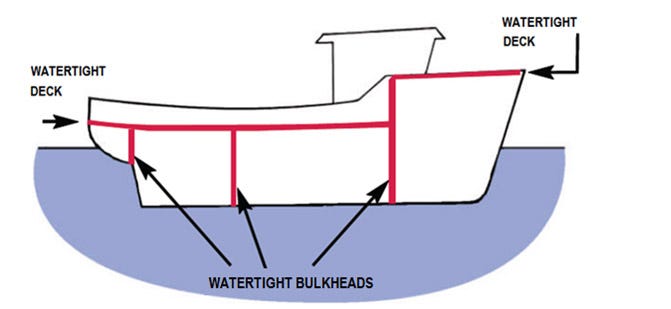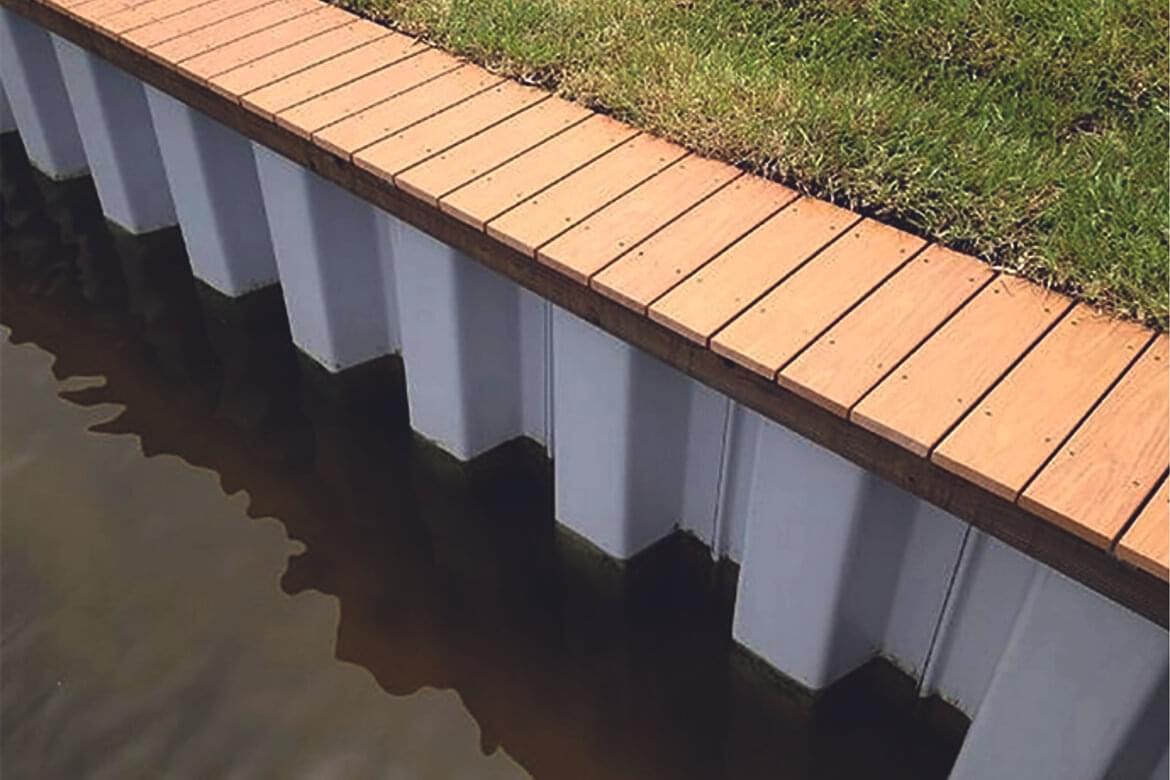Bulkhead on Lake Livingston: A Step-by-Step Plan Before Installation
Exploring the Different Uses Bulkhead Structures in Modern Architecture
Bulkhead structures play a significant function in modern architecture, offering both practical and visual objectives. They can define spaces, improve storage space solutions, and enhance lights. In industrial settings, they function as focal factors that reflect brand identity - Bulkhead on Lake Livingston. Furthermore, their combination usually sustains audio administration and sustainable techniques. Comprehending the full scope of their applications reveals much concerning modern layout trends and user experience. What ingenious uses bulkheads might arise in the future?
Defining Bulkhead Structures
Bulkhead frameworks play a crucial role in modern-day design, functioning as crucial components in various structure designs. These structures are typically specified as increased platforms or ceilings, typically utilized to conceal mechanical systems, wiring, or plumbing. Bulkheads can be discovered in both household and commercial setups, where they give a smooth blend of capability and visual appeals. Their design can incorporate lights components and various other ornamental elements, enhancing the overall visual charm of a space.
Generally created from materials such as metal, wood, or drywall, bulkheads can be customized to fit the building design and needs of the structure (Bulkhead on Lake Livingston). They offer not just to hide unsightly facilities yet also to develop defined zones within open rooms. By handling the flow of an area, bulkheads add to the spatial organization, making them a substantial aspect of modern architectural practice. Their meaning envelops both aesthetic and functional measurements.
Practical Applications in Residential Style
Bulkhead frameworks play a necessary function in domestic layout by assisting in space optimization approaches that make the most of functional areas. They add visual design elements that enhance the visual appeal of living areas. Additionally, these frameworks supply vital structural support solutions, ensuring the integrity and safety and security of the home.
Room Optimization Approaches
As modern domestic styles increasingly prioritize efficient use space, innovative methods arise to make the most of functionality without sacrificing appearances. One noticeable strategy entails the combination of bulkhead structures, which can delineate areas while giving essential storage space remedies. These frameworks can be utilized to create vertical storage systems that boost both organization and availability. Furthermore, multi-functional furnishings, such as convertible couches and collapsible tables, complements bulkhead layouts, enabling spaces to adapt to varying needs. Open up flooring plans additionally optimize spatial circulation, urging adaptability in usage. Incorporating integrated shelving and recessed illumination within bulkheads also adds to a structured atmosphere, guaranteeing that every inch of space is used efficiently and sympathetically within the overall layout.
Aesthetic Layout Aspects

Structural Support Solutions
In modern-day residential style, an efficient architectural assistance solution is crucial for keeping the integrity of spaces while optimizing format and performance. Bulkhead structures play a substantial role in this circumstance, functioning as both assistance and dividing components. They can conceal mechanical systems, such as plumbing and electric circuitry, while supplying support to the ceiling and flooring systems. By purposefully placing bulkheads, architects can produce specified locations within open layout, enhancing functionality without endangering architectural security. Furthermore, these structures can fit lights components, adding to both aesthetic appeals and usefulness. To sum up, bulkhead frameworks are vital in residential design, offering flexible support services that improve both the functionality and aesthetic allure of living spaces.
Enhancing Appearances in Business Spaces
When industrial spaces welcome ingenious bulkhead frameworks, they not just specify physical limits but likewise greatly improve the general aesthetic appeals of the atmosphere. These building elements offer as visual centerpieces, drawing attention and producing a feeling of intrigue. By integrating varied products such as metal, wood, or glass, bulkheads can reflect a brand name's identity and objective, contributing to a natural layout.
Moreover, the strategic positioning of bulkheads can manipulate light and shadow, adding deepness and measurement to or else flat areas. This interaction can change a business location right into a welcoming atmosphere, motivating consumer engagement. Furthermore, using shade and structure in bulkhead layout can evoke details emotions, boosting the overall client experience. Ultimately, the thoughtful combination of bulkhead frameworks elevates the aesthetic appeal of industrial areas, making them not just useful yet also aesthetically charming, therefore fostering a lasting impact on visitors.
Acoustic Performance and Sound Monitoring
Reliable acoustic performance plays a vital role in modern architecture, specifically within business areas where sound monitoring is essential. Bulkhead frameworks can greatly enhance acoustic high qualities by taking in audio, decreasing reverberation, and mitigating sound transfer between areas. These features are specifically helpful in environments such as offices, theaters, and dining establishments, where clear interaction and a pleasant acoustic experience are critical.
The tactical positioning and style of bulkheads can aid develop sound-buffer areas, successfully isolating noisy areas from quieter ones. Materials utilized in bulkhead construction, such as acoustic panels and soft finishes, add to their sound-dampening abilities. Additionally, the unification of bulkheads permits the combination of sound-absorbing elements without compromising visual charm. By resolving acoustic performance, engineers can develop harmonious environments that improve comfort, boost individual experience, and promote productivity, making bulkheads an important element in the style of modern industrial spaces.
Incorporating Bulkheads for Effective Room Application
Although typically neglected, the assimilation of bulkheads in architectural layout can considerably enhance room application in modern-day buildings. These architectural elements serve numerous functional purposes, using a way to hide mechanical systems, electrical wiring, and pipes without endangering looks. By strategically positioning bulkheads, designers can produce defined locations within open layout, thus promoting better organization and circulation.
Bulkheads can integrate storage space services and illumination attributes, optimizing the capability of or else lost vertical room. In household setups, they may define areas such as kitchens or living locations, while in commercial spaces, they can enhance the efficiency of formats by plainly noting pathways and workplace.
Ultimately, the thoughtful integration of bulkheads adds to an extra aesthetically attractive and organized environment, permitting versatile spaces that can evolve with the demands of their residents. This strategy not only enhances space however likewise fosters a much more harmonious interaction between form and function.
Bulkheads in Public Style

Architectural Aesthetic Enhancements
While many building aspects go for functionality, bulkheads in public design serve a double purpose by improving visual charm. These frameworks frequently develop aesthetic rate of interest via their style, integrating effortlessly with bordering aspects. By using basics different materials, structures, and colors, bulkheads can add to a special identity for public spaces, such as airport terminals, galleries, and libraries. Their critical positioning helps to delineate areas, directing site visitors while adding deepness to the general design. Additionally, bulkheads can emphasize lighting, creating dynamic environments that alter throughout the day. This aesthetic improvement not only boosts the site visitor experience yet likewise cultivates a sense of location, making bulkheads a necessary consideration in contemporary public style. On the whole, bulkheads personify the combination of form and feature.

Architectural Support Solutions
As architects look for ingenious methods to enhance the structural stability of public areas, bulkheads become necessary components in the style and construction procedure. These frameworks give critical assistance, particularly in locations based on heavy foot traffic or vibrant tons. By dispersing weight uniformly, bulkheads aid protect against structural failing while allowing for flexible layout options. In large places, such as stadiums and convention centers, bulkheads are commonly integrated into the overall building framework, making certain stability and security. Furthermore, they can assist in the consolidation of energies and mechanical systems, adding to the efficiency of room use. Inevitably, bulkheads stand for an important solution in modern-day public style, enhancing both performance and protection in community-focused environments.
Environmental Protection Actions
Integrating environmental management steps right into public architecture has actually come to be progressively important as metropolitan developers prioritize sustainability alongside architectural support. Bulkhead structures serve a dual objective hereof, working as barriers versus erosion and flooding while simultaneously enhancing the aesthetic charm of city landscapes. Their design frequently consists of all-natural elements such as vegetation, which can boost air high quality and provide habitats for wildlife. In addition, bulkheads can be engineered with permeable products that permit water absorption, decreasing overflow and promoting groundwater recharge. This assimilation of environmental considerations not only protects the environment yet likewise cultivates community strength against climate adjustment. By making use of bulkheads efficiently, designers add to lasting urban development that aligns with modern ecological goals.
Future Patterns in Bulkhead Style
Arising fads in bulkhead layout mirror an expanding focus on sustainability, advancement, and performance in contemporary design. Designers are significantly including eco-friendly materials, such as recycled composites and bioplastics, to lower environmental effect. Furthermore, the integration of smart innovation is ending up being common, making it possible for bulkheads to offer multi-functional purposes, including power storage and environment control.
In urban setups, modular bulkhead systems are getting traction, offering adaptability in style and simplicity of installment. These systems can be adapted to different landscapes, enabling reliable area application. Furthermore, visual considerations are progressing; bulkheads are currently being designed to boost visual appeal, frequently incorporating imaginative elements that resonate with neighborhood culture.
As climate resilience comes to be a concern, future bulkhead layouts will likely prioritize flood protection and stormwater administration, making certain architectural stability while resolving environmental challenges. This change symbolizes an alternative technique to architecture that satisfies both environmental responsibilities and human requirements.
Frequently Asked Questions
What Products Are Generally Made Use Of for Bulkhead Construction?
Usual materials for bulkhead building include concrete, steel, wood, and composite products. These alternatives offer longevity, structural stability, and resistance to environmental aspects, making them ideal for different applications in building and construction and design tasks.
How Do Bulkheads Affect Building Energy Effectiveness?
Bulkheads enhance constructing energy effectiveness by offering thermal insulation and minimizing air leakage (Bulkhead on Lake Livingston). They their website help preserve indoor temperature levels, thereby reducing heating and cooling demands, ultimately causing reduced power prices and enhanced environmental sustainability
Are There Any Kind Of Building Ordinance Details to Bulkhead Frameworks?
Yes, building codes particular to bulkhead structures exist, differing by area. These laws normally resolve security, structural integrity, and ease of access, ensuring that official site bulkheads meet required criteria for building and style within a provided jurisdiction.
Can Bulkheads Be Quickly Changed or Gotten Rid Of Later On?
Bulkheads can often be changed or eliminated, depending upon their design and building and construction. Such alterations might require cautious preparation and adherence to building codes to guarantee structural honesty and security are maintained throughout the procedure.
What Are the Costs Related To Setting Up Bulkhead Structures?
The costs connected with installing bulkhead frameworks can vary significantly, commonly affected by materials, layout intricacy, and labor. Typically, expenditures vary from moderate to high, relying on the project's specific demands and place.
Bulkhead structures play a vital function in modern style, offering as essential elements in various structure designs. Bulkhead structures play an important role in household style by promoting area optimization strategies that take full advantage of usable areas. Typically ignored, the combination of bulkheads in building style can significantly improve room usage in contemporary buildings. As designers seek innovative means to enhance the structural stability of public areas, bulkheads emerge as crucial elements in the layout and building process. The expenses connected with setting up bulkhead frameworks can differ considerably, usually influenced by products, layout complexity, and labor.